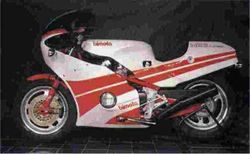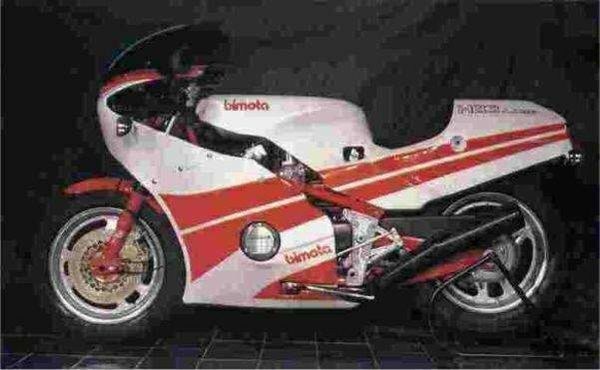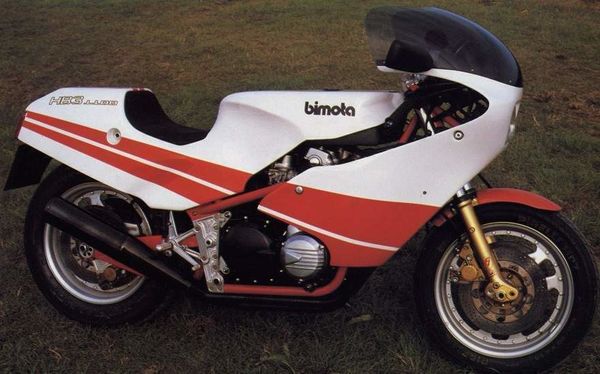Bimota HB3
 |
|
| Bimota HB3 | |
| Manufacturer | |
|---|---|
| Production | 1983 |
| Class | Sport Bike |
| Engine | air/oil-cooled, four-stroke, transverse four cylinder, DOHC, 4 valves per cylinder |
| Bore / Stroke | 71.1mm x 71.1mm |
| Compression ratio | 9.7:1 |
| Horsepower | 115.06 HP (85.8 KW) @ 8500RPM |
| Torque | 73.76 ft/lbs (100.0 Nm) @ 7500RPM |
| Transmission | Gear box: 5-speed, manual Final Drive: chain |
| Suspension | Front: 40mm Italia telescopic fork, magnesium tubes Rear: De Carbon adjustable shock absorber |
| Brakes | Front: dual 280mm discs Rear: single 280mm disc |
| Front Tire | 3.5 x 16 |
| Rear Tire | 4.24 x 16 |
| Weight | 239.0 kg (wet) |
| Manuals | Service Manual |
The Bimota HB3 was a air/oil-cooled, four-stroke, transverse four cylinder, DOHC, 4 valves per cylinder Sport Bike motorcycle produced by Bimota in 1983. Max torque was 73.76 ft/lbs (100.0 Nm) @ 7500 RPM. Claimed horsepower was 115.06 HP (85.8 KW) @ 8500 RPM.
Engine[edit | edit source]
A 71.1mm bore x 71.1mm stroke result in a displacement of just 1062.0 cubic centimeters.
Drive[edit | edit source]
The bike has a 5-speed, manual transmission. Power was moderated via the wet multi-disc, manual.
Chassis[edit | edit source]
It came with a 3.5 x 16 front tire and a 4.24 x 16 rear tire. Stopping was achieved via dual 280mm discs in the front and a single 280mm disc in the rear. The front suspension was a 40mm Italia telescopic fork, magnesium tubes while the rear was equipped with a De Carbon adjustable shock absorber.
1983 Bimota HB3[edit | edit source]
The 1983 MY Bimota HB3 has, at its heart, an air/oil-cooled, four-stroke, 1062cc, transverse four cylinder powerplant paired to a five-speed manual transmission, and can reach a maximum power output of 115 horsepower and 100 Nm of torque.
It also comes standard with a 40mm Italia telescopic fork with magnesium tubes, a De Carbon adjustable shock absorber in the rear, a Brembo braking system with dual discs in the front, a full-fairing, a large windscreen, a single seat, cast-aluminum wheels, a dual exhaust system, an analogue instrument cluster, plus a race-inspired paint and graphic scheme.

